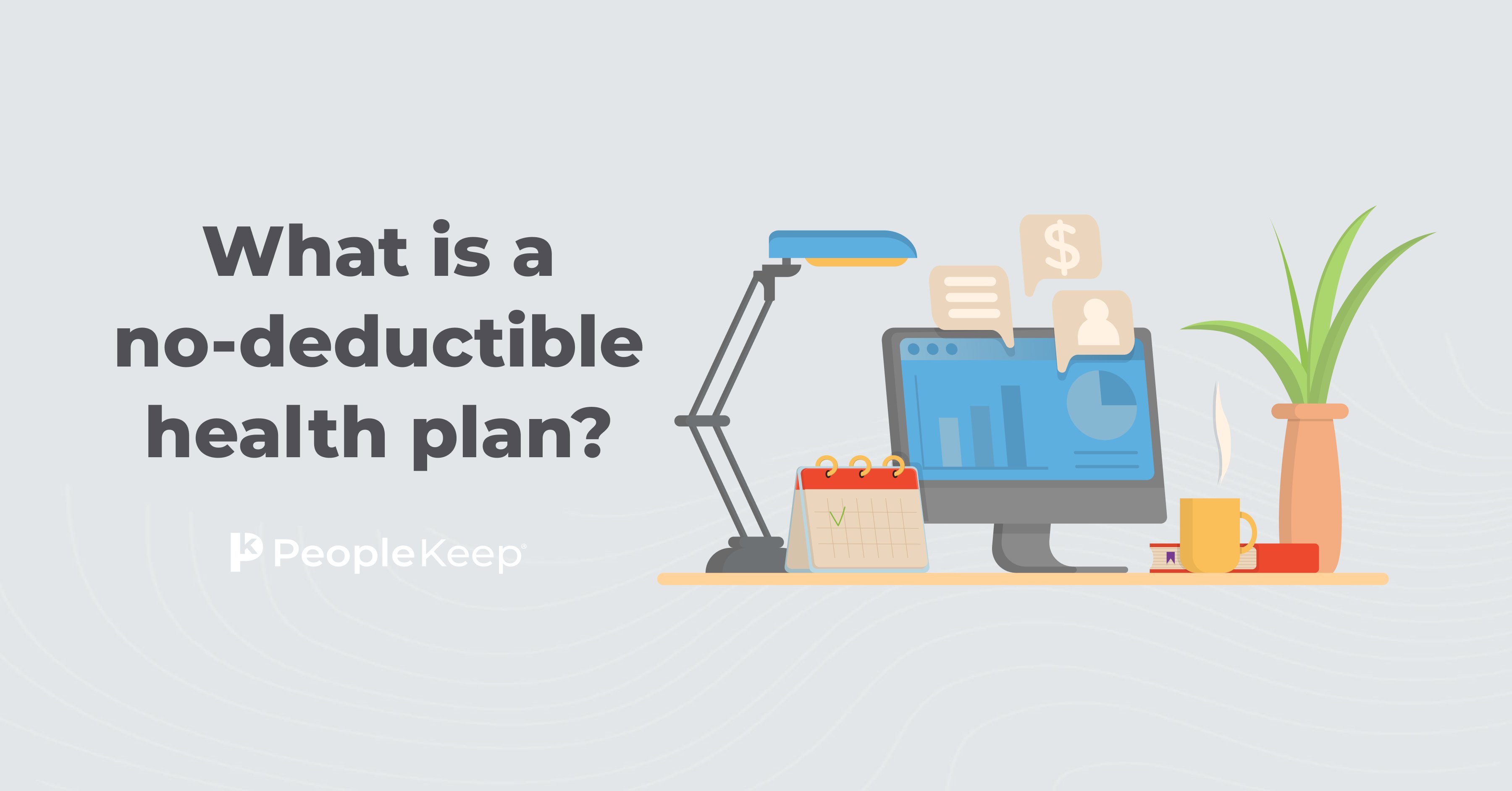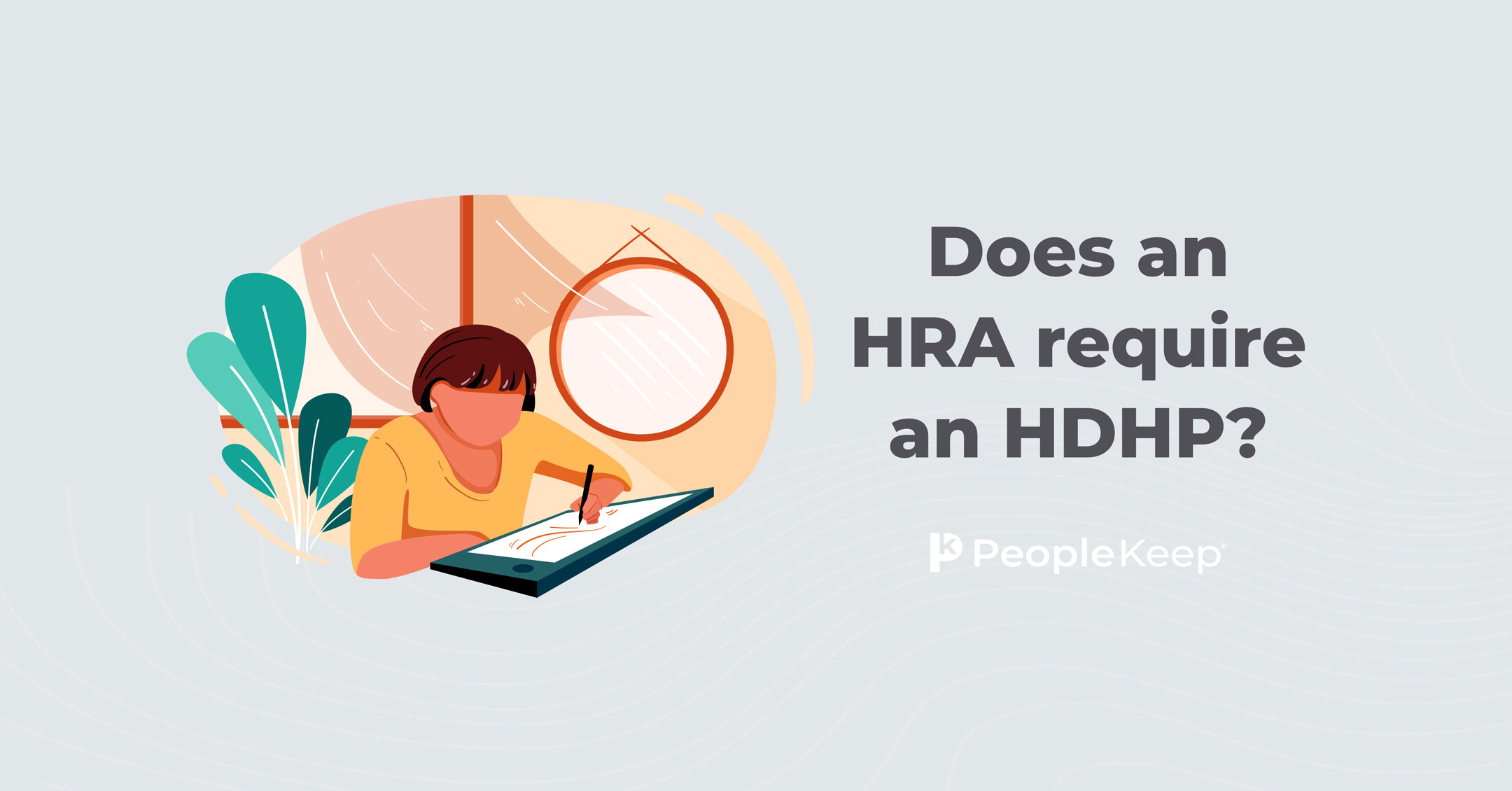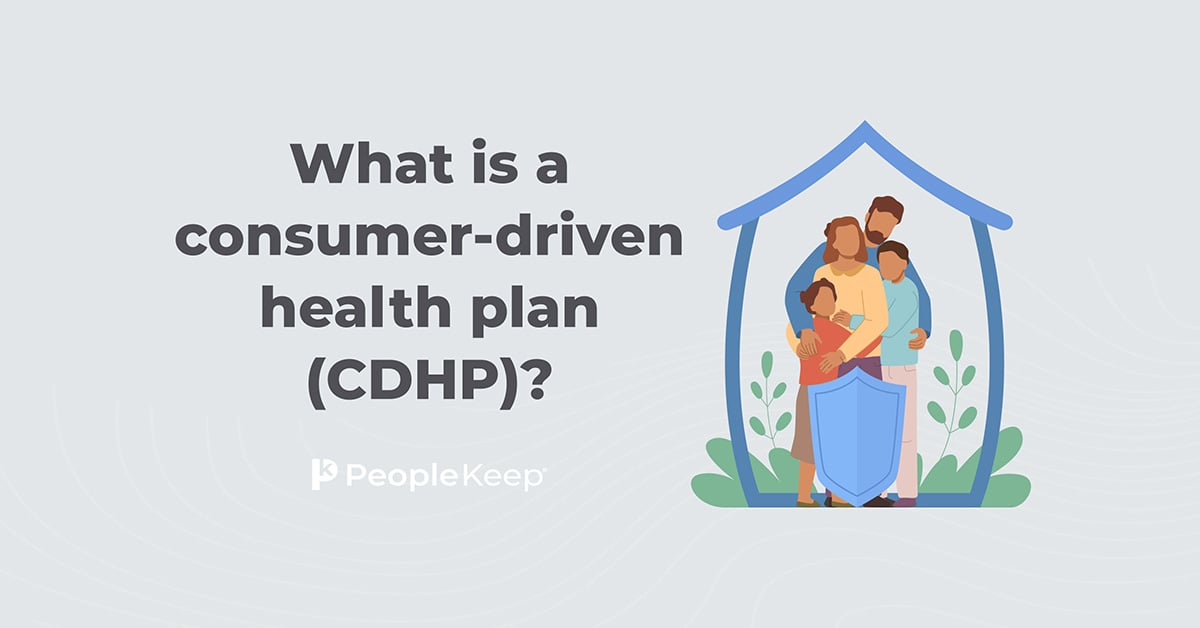Choosing between a low or high deductible health plan
By Elizabeth Walker on October 18, 2024 at 8:00 AM
Whether you’re an employer shopping for a group plan for your staff or an individual seeking insurance for you and your family, you’ve likely wondered about the difference between a high deductible health plan (HDHP) and a low deductible health plan (LDHP).
If affordability is a concern, it’s important to choose coverage that fits your budget while offering you access to the care you need in case of an emergency. While HDHPs and LDHPs each have their advantages, understanding the ins and outs of both will help you make a more informed decision for your financial situation and specific medical needs.
In this blog post, you’ll learn:
- The key differences between HDHPs and LDHPs.
- Who should choose an HDHP vs. an LDHP based on health status and budget.
- How employers can enhance their compensation package with benefits like health savings accounts (HSAs) and health reimbursement arrangements (HRAs).
How do HDHPs and LDHPs compare?
As their names imply, HDHPs and LDHPs have one primary difference: their healthcare deductible. A deductible is the amount a policyholder must pay before their health insurance company starts to pay for any medical expenses.
An HDHP must have a minimum annual deductible and out-of-pocket maximum of at least the following in 20261:
|
Plan type |
Annual deductible amount |
Out-of-pocket maximum |
|
Single coverage |
$1,700 |
$8,500 |
|
Family coverage |
$3,400 |
$17,000 |
Conversely, a plan is an LDHP if its deductible is less than $1,650 for self-only coverage or $3,300 for family insurance coverage.
HDHPs have higher deductibles than LDHPs. But they typically have lower monthly health insurance premiums. This is because the policyholder takes on more financial risk and higher out-of-pocket costs if they have major healthcare expenses.
The following chart shows the average annual premium for HDHPs in 2025 compared to all plan types2:
|
Average HDHP annual premium |
Average annual premium for all types of plans |
Average cost difference |
|
|
Single coverage |
$8,620 |
$9,325 |
-$705 |
|
Family coverage |
$25,379 |
$26,993 |
-$1,614 |
Who should choose an HDHP?
In addition to budget and other factors, other considerations may apply if you’re an individual consumer or an employer who’s determining whether an HDHP is the right choice.
Individuals
HDHPs have higher out-of-pocket costs than LDHPs. So, this type of plan is best for healthy people who expect little to no healthcare expenses. If this outlines your scenario, the HDHP’s lower premium will likely save you more money than you would spend on medical care.
Choosing an HDHP is also a good way for individuals who can’t afford an LDHP to have health plan coverage. Health insurers negotiate rates with providers. So, you’ll pay less for products and medical services overall than if you were uninsured.
Plus, if you buy an individual plan on a public marketplace, your HDHP will cover essential health benefits if you need medical attention. These benefits include emergency care, preventive healthcare services, and prescription drugs.
High-deductible plans can still make sense even if you have the money to buy an LDHP. If you choose an HSA-qualified HDHP, you can open a health savings account (HSA). An HSA allows you to put money aside for future medical expenses. These medical savings can help lower your plan’s out-of-pocket medical costs.
Employers
Employers save money on health insurance premiums and reduce their financial burden by opting for an HDHP. But as with individual consumers, these plans will provide the best value for your staff if they’re generally in good health with no history of major illness.
If you feel an HDHP won’t offer your employees enough coverage, you can supplement it with a group coverage health reimbursement arrangement (GCHRA) or an HSA. Both a GCHRA and HSA can help your employees with out-of-pocket costs before they reach their higher deductible. This allows you to provide a more comprehensive health benefit for your workforce.
Who should choose an LDHP?
Like HDHPs, LDHPs have specific considerations that may differ depending on whether you’re shopping as an individual or an employer.
Individuals
You would most likely benefit from a low-deductible plan if you’re older, have a chronic condition, or simply receive frequent medical care.
Having an LDHP can save you money if you have costly health issues or a larger family. The higher premium would be far less than what you would pay in deductibles and out-of-pocket maximums with an HDHP.
For many people, paying a little more each month is easier than covering a large medical bill. A 2024 Bankrate survey found that only 44% of U.S. adults would pay an emergency medical expense of $1,000 or more from their savings3. If you don’t want to deal with the cost of an unexpected illness, choosing an LDHP may be your best coverage option.
Employers
If you have a large health benefits budget and want your staff to pay little to nothing in out-of-pocket medical costs, consider an LDHP. The low deductibles and out-of-pocket max mean your insurance carrier will pick up most of the bill if your employees incur an expense.
An LDHP is also an excellent plan option for your employees if they use healthcare frequently. While this type of plan is the most desirable to employees, it’s often unattainable due to budget, especially if you’re a small business owner. If you want total budget control beyond what you could achieve with an LDHP and HDHP, you have alternative options.
The qualified small employer HRA (QSEHRA) and individual coverage HRA (ICHRA) allow employers to reimburse employees for health insurance premiums and qualified out-of-pocket medical expenses. Simply set a budget-friendly monthly allowance and reimburse employees when they incur a qualified expense.
With an HRA, you can maintain an affordable price range while offering your employees a flexible and personalized health benefit.
Which type of health plan is right for me?
The chart below summarizes how these two health insurance plans compare.
|
High deductible health plan (HDHP) |
Low deductible health plan (LDHP) |
|
|
Monthly payments |
The premium is lower than an LDHP to account for decreased financial risk for the insurer. |
The premium is higher than an HDHP to account for increased financial risk to the insurer. |
|
Annual deductible level |
Self-only plans: at least $1,700 Family plans: at least $3,400 |
Self-only plans: less than $1,700 Family plans: less than $3,400 |
|
Out-of-pocket maximum limit |
Self-only plans: $8,500 or less Family plans: $17,000 or less |
Varies by plan, but out-of-pocket limits for individual LDHPs are often higher than HDHPs. The Marketplace caps out-of-pocket limits at $10,600 for self-only and $21,200 for family plans.4 |
|
Coinsurance rate |
It depends on the plan. But, the coinsurance is typically higher than that of an LDHP. |
It depends on the plan. But, the coinsurance is typically lower than that of an HDHP. |
|
Is it HSA-compatible? |
Yes, as long as you have an HSA-qualified HDHP, per federal government regulations. |
No. LDHPs are ineligible plans for an HSA. |
|
Is it compatible with a GCHRA? |
Yes |
Yes |
|
Individuals should consider if they meet the following criteria: |
|
|
|
Employers should consider if they meet the following criteria: |
|
|
How can employers supplement their group health insurance plan?
If you’re an employer considering an LDHP or HDHP, you have a few options to make your traditional health plan more appealing to your employees.
Health savings account (HSA)
If you have a qualified HDHP, you might benefit from an HSA. With an HSA, individual consumers or employees can set aside pre-tax dollars to pay for qualified medical expenses outlined in IRS Publication 502, except for insurance premiums5.
Whether an employer offers one or an individual opens an account at a financial institution, the employee always owns it. Contributions can come from both the employer and the employee. But combined contributions can’t exceed the annual maximum contribution limit. If employees leave their jobs, all the money in the account stays with them.
Here are the tax advantages of HSAs:
- Employers and employees can make tax-deductible contributions.
- Investment earnings are tax-free.
- Employees can make tax-free withdrawals using an HSA debit card to pay for eligible out-of-pocket healthcare costs.
Individuals aged 65 or older can use their HSA funds for non-medical withdrawals. However, those younger than 65 must pay income taxes and an additional 20% penalty if they spend their HSA on non-medical costs.
Group coverage HRA (GCHRA)
Another option for employers is to offer a GCHRA, also known as an integrated HRA. Businesses of all sizes can use a GCHRA to reimburse employees for the out-of-pocket healthcare costs their group health plan doesn’t fully cover.
Like other HRAs, you give your employees a monthly GCHRA allowance that they can spend on medical care. Once they show proof of an eligible expense, you reimburse them tax-free up to their allowance amount.
Here are a few more advantages of the GCHRA:
- The GCHRA can boost your group health plan by reimbursing employees for deductibles, coinsurance, copays, and other qualified medical expenses.
- They can work alongside any group healthcare plan, including an HDHP or LDHP.
- There are no minimum or maximum contribution limits. So, you can offer your staff as much monthly allowance as you wish.
- You can vary eligibility and allowances by employee classes for greater personalization.
- Unlike HSAs, an employee’s unused GCHRA allowance funds stay with your company if they leave your organization.
- HRA reimbursements are payroll tax-free for employers and free of income taxes for employees.
With a GCHRA, employers can have greater control over their budget, and employees can have more choices in their healthcare options.
Conclusion
There’s a lot to consider when picking the right health plan. But there are some situations where one is a better fit. If you receive medical care frequently, opt for an LDHP to keep your out-of-pocket expenses affordable. Individuals who don’t need healthcare often should go for an HDHP to save on their monthly premiums. But in the end, having an HDHP is better than going uninsured, even if you’d prefer an LDHP.
Employers can add a GCHRA to their benefits package to make their HDHP or LDHP more attractive to employees. If you think a GCHRA is suitable for your organization, reach out to us, and we’ll help you get started.
This article was originally published on December 10, 2021. It was last updated on October 28, 2024.
1. IRS Publication Rev. Proc. 2025-19
2. KFF 2025 Employee Benefits Survey
Check out more resources
See these related articles

What is a no-deductible health plan?
Wondering what a no-deductible health plan is? Find out how these insurance options can provide comprehensive coverage without the burden of deductibles.

Does an HRA require an HDHP?
Curious about the relationship between HDHPs and HRAs? Find out if an HRA requires an HDHP in this informative post.

What is a consumer driven health plan (CDHP)?
Looking for a healthcare plan that gives you more flexibility? Explore the concept of a consumer driven health plan (CDHP) and its advantages here.



